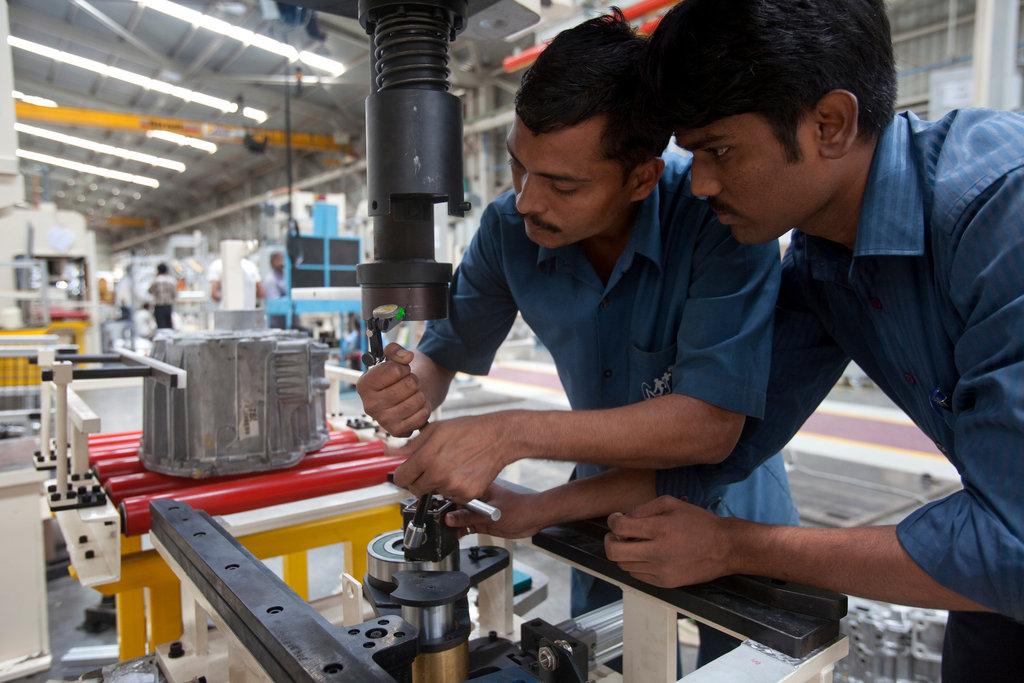Post RCEP walk out, Centre to focus more on bilateral trade agreements in 2020
Indian Express - 31 December 2019
Post RCEP walk out, Centre to focus more on bilateral trade agreements in 2020
By Prabha Raghavan
India’s existing and stalled bilateral free trade agreements (FTAs) slowly garnered more attention from the government this year, even as it was trying to conclude seven year-long negotiations to join the Regional Comprehensive Economic Partnership (RCEP) — the world’s “largest” regional trade pact. Despite the country now having backed out of the mega trade deal, its renewed interest on its other trade pacts, several of which have failed to deliver the results expected, has set the tone for its focus in the coming year.
In the words of the Commerce Ministry, Indian industry and services will be competitive and benefit from access to “large developed markets”.
This includes forging stronger economic ties with regions like the EU, with which FTA talks were initiated in 2007 but fell through.
“The India-EU FTA, to my mind, is an FTA we must engage in. They are countries where India has a number of products, which we can export, which we can benefit from … Currently, there is no discussion on the FTA. It was aborted several years ago,” Commerce Minister Piyush Goyal said last month. Since India’s walk out from RCEP, Goyal has made more statements at different forums about taking forward these discussions.
“I think some progress could be made on EU in the coming year. This also depends on how issues like the EU’s push for concessions in agriculture and India’s demand for market access for its services sector are resolved,” said Durgesh Rai, fellow, ICRIER. “Whether the two can close a deal in the coming year is difficult to say. But, one thing is for certain — our willingness to move forward with EU has definitely increased,” he said.
A trade package with the US in the spotlight earlier this year may also be a priority for the government. In October, Goyal said the two countries had “almost resolved the broad contours” of a trade package though nothing has fructified yet.
India and the US have been trying to resolve trade-related issues that caused the Trump administration to withdraw India’s benefits under its Generalized System of Preferences (GSP) programme in June, prompting the Modi government to respond with retaliatory tariffs. “There was a lot of expectation that they (the government) were going to take definite steps in the US deal. That, too, doesn’t seem to be the case, even though the US talks are the more realistic option out of the government’s proposed negotiations at the moment,” said Biswajit Dhar, professor at Centre for Economic Studies and Planning, Jawaharlal Nehru University.
“We can see at least some road map or framework or way forward with the EU, but with the US, it is more complicated. It is more political and also depends on how far the other side is able to move on certain issues,” said ICRIER’s Rai.
India is also keen on revising its existing trade agreements with most RCEP nations, even while it remains firm on staying out of the larger trading pact. “RCEP had become nothing but an India-China FTA, which nobody wants,” said Goyal earlier this month.
In September, before India walked out of RCEP, the 10 member states of the Association of Southeast Asian Nations (ASEAN) bloc — a major chunk of the RCEP group — agreed to review their FTA in goods with the country to simplify them for businesses. Officials involved in this review are expected to submit an update at the 17th consultation of ASEAN Economic Ministers to be held next year. This is also crucial as India, currently, has a trade deficit with all RCEP countries because its industries have not been able to take advantage of these FTAs.
It has been pushing for similar reviews with Japan and South Korea, two other RCEP nations, but some trade experts feel that it should also be pursuing fresh FTAs with some of the other remaining countries in the mega trade deal.
“They should try to get FTAs with Australia and New Zealand as well … so whatever the potential damage we may see from India not joining RCEP can be reduced,” said Rai. Meanwhile, some experts feel the government needs to reassure all stakeholders that it can lift the economy out of its current state before moving ahead with trade agreements.
“The RCEP decision was taken two months ago, and, since then there are no signs that the economy has improved,” said Dhar. “Hemorrhaging of the manufacturing sector has subsided … but rating agencies show that the country is still in the middle of a crisis,” he said.
“The government had earlier chosen the easier option of monetary policy as a solution, but this kind of supply-side measure didn’t have any impact on the economy. What we need now is certain fiscal measures to crack this logjam,” he said. Dhar and Rai expect the Centre to be cautious in taking potential trade deals forward in 2020, a sentiment that already seems to be echoed by Goyal.
“I think the lessons to be learnt are that we should never finalise a trade agreement in a hurry, with a timeline like it was done in 2010 or 2011 with Japan, with Korea, with Malaysia, with ASEAN countries,” Goyal said soon after the RCEP deal fell through.
“I can assure all of you that going forward, none of the FTAs will be settled in a hurry or will be settled to the disadvantage of Indian industry and exporters,” the Minister said in a separate forum earlier this month.






